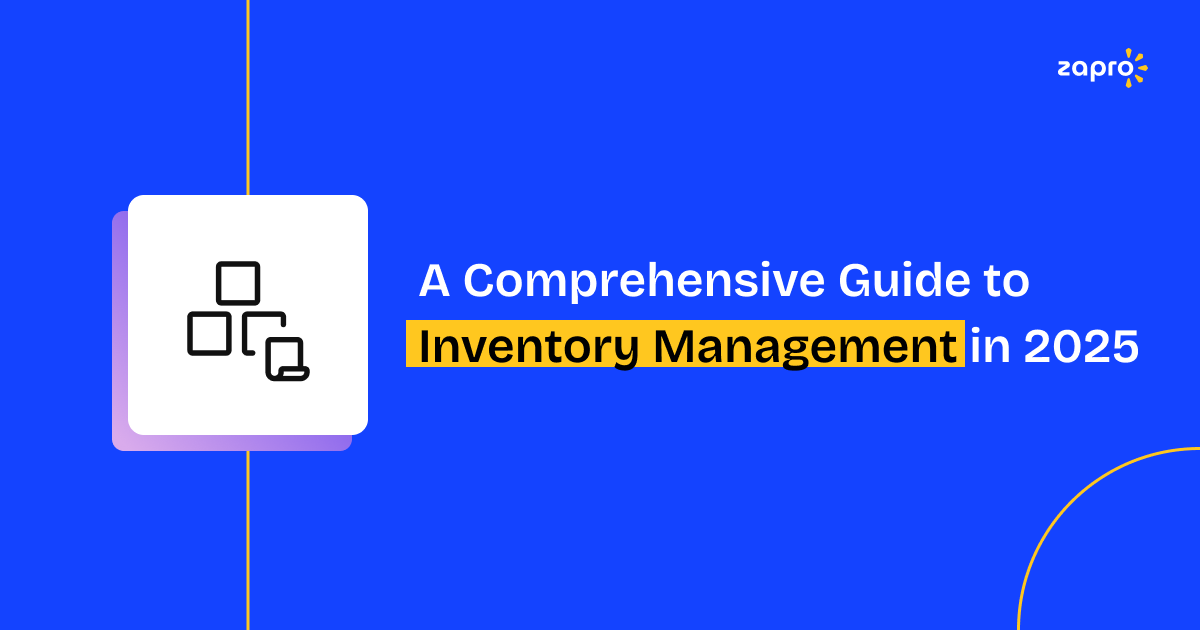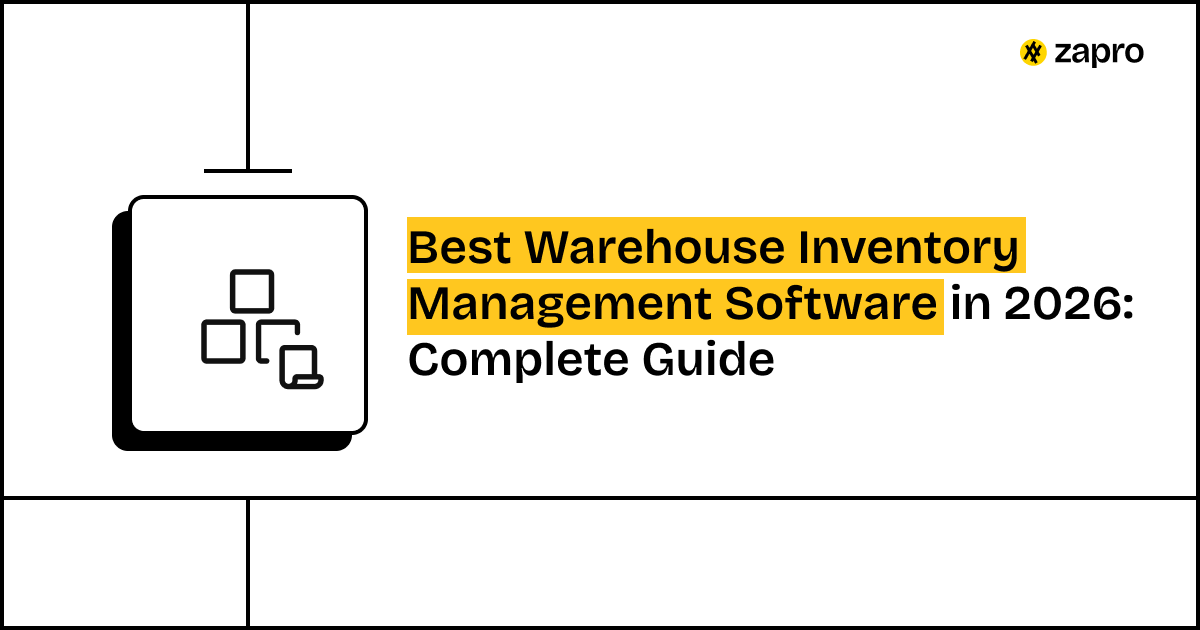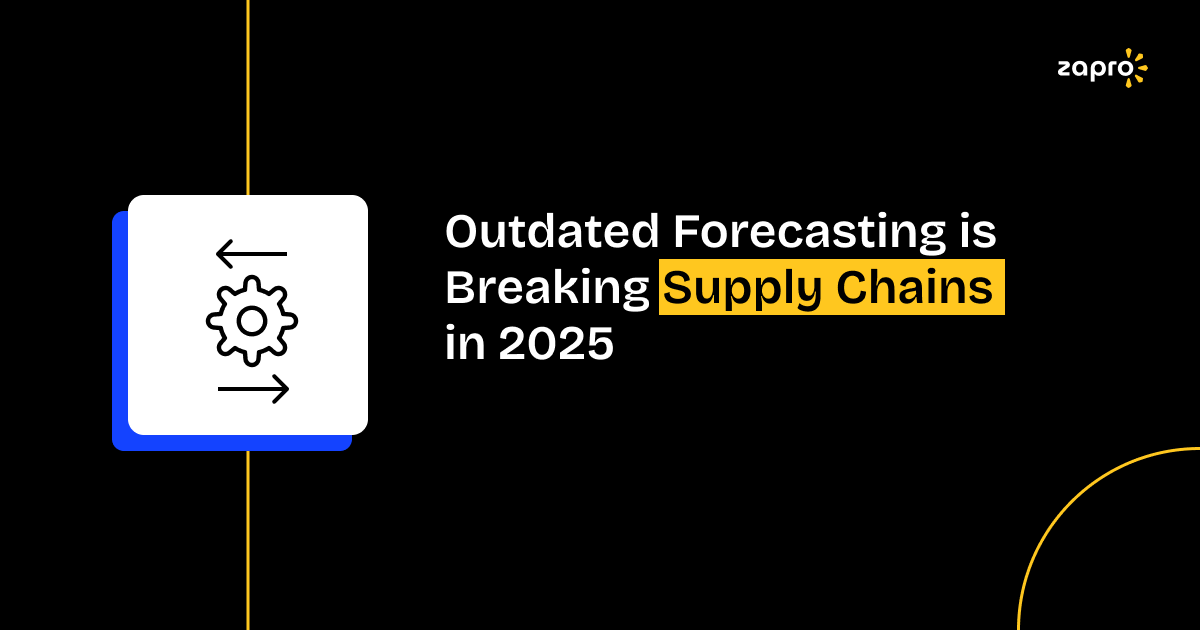Forecasting feeds directly into planning. Let’s look at the most widely used models that help determine optimal stock levels and streamline operations for better inventory planning & forecasting.
1. Safety Stock Calculation
Safety stock protects supply from unanticipated demand surges and supply chain forecasting issues like lead times that are longer than expected. It’s influenced by:
- Demand variability
- Lead time fluctuations
- Service level goals
Formula (Basic):
Safety Stock = Z-score × Standard Deviation of Demand × √Lead Time
This technique is one of the foundational inventory forecasting techniques and is critical for maintaining service levels.
2. Reorder Point (ROP) Optimization
Reorder point is the inventory level at which a replenishment order should be triggered.
Formula:
ROP = (Average Demand × Lead Time) + Safety Stock
Advanced tools calculate dynamic ROPs that adjust in real-time to reflect current conditions. This ensures efficient demand planning inventory and reduces stockouts.
3. Economic Order Quantity (EOQ)
EOQ determines the optimal order size that minimizes total inventory costs (ordering + holding).
Formula:
EOQ = √((2 × Demand × Ordering Cost) / Holding Cost)
Modern EOQ models factor in variable lead times, bulk discounts, and multi-echelon logistics. These are among the most used inventory models in planning.
4. Material Requirements Planning (MRP)
MRP is used in manufacturing to ensure that there is availability of raw materials and components for the production. MRP incorporates:
- Production schedules
- Bill of Materials (BOM)
- Inventory levels
MRP improves predictive inventory decisions, especially when combined with AI tools.
5. Distribution Requirements Planning (DRP)
This is used by companies that have more than one warehouse or retail store to ensure that there is efficient distribution of inventory throughout the network using proven stock optimization methods.
Challenges in Accurate Inventory Forecasting & Planning
Despite technological advancements, inventory forecasting still faces hurdles:
1. Data Quality and Silos
Inaccurate, outdated, or insufficient data used in the forecasting process leads to poor results. Lack of integration between different systems limits the visibility of the data quality and silos.
2. Market Volatility
Demand shocks, geopolitical shifts, and pandemics can render forecasts obsolete overnight.
3. Supply Chain Disruptions
Long or unreliable lead times, port congestion, and raw material shortages impact availability.
4. Human Bias
Using too much intuition and old rules of thumb for forecasting can lead to inaccurate result
5. Lack of Real-Time Intelligence
Delayed insights mean slow reactions, missed opportunities, and lost revenue.

Forecasting is inherently flawed, but essential. The goal isn’t perfection, but continuous improvement and building resilience against forecast errors.
– Lora Cecere, Founder of Supply Chain Insights
Best Practices for Enhanced Forecasting & Planning
Here’s how leading companies optimize their inventory planning & forecasting strategies:
1. Implement CPFR (Collaborative Planning, Forecasting & Replenishment)
Work with suppliers, distributors, and partners to synchronize planning efforts through forecasting.
2. Leverage AI, ML & Advanced Analytics
Adopt systems that provide predictive insights and simulate demand scenarios.
3. Continuously Clean & Enrich Data
To have high-quality data, implement robust master data management practices.
4. Adopt Scenario Planning
Prepare for best-case, worst-case, and most likely outcomes to mitigate risks.
5. Foster Cross-Functional Collaboration
Involve sales, marketing, finance, and supply chain in the forecasting process.
Prescriptive analytics is on the rise. It not only predicts outcomes but also recommends actions—dramatically improving inventory efficiency and enabling better demand planning inventory systems.
How Zapro.ai Empowers Your Inventory Planning & Forecasting
Zapro.ai transforms traditional inventory planning & forecasting into a smart, automated, and data-driven function.
Key Capabilities:
- Historical Data Analysis: Analyze trends, seasonality, and outliers
- Custom Forecasting Models: Select from various statistical and AI-driven models
- Real-Time Insights: Adjust plans based on live sales and supply chain data
- Sales & ERP Integration: Connect planning directly with financial and operational systems
Zapro’s Advanced Features for Predictive Inventory Management
Unlock smarter predictive inventory decisions with these game-changing features:
- Demand Sensing
Short-term forecasting based on real-time signals like point-of-sale (POS) data, social media buzz, and promotions. - Safety Stock Optimization
Automated calculations that factor in volatility, service levels, and risk exposure. - Multi-Location Inventory Visibility
Holistic view across warehouses, stores, and distribution centers. - ERP & E-commerce Integration
Seamless connection with existing platforms to automate workflows and enhance inventory forecasting techniques.
Case Study: How a Leading Consumer Electronics Company Improved Forecast Accuracy by 35% with Zapro.ai
A leading consumer electronics retailer struggled with erratic demand and stock imbalances. With Zapro.ai, they:
- Deployed ML-based models for regional inventory forecasting
- Reduced obsolete stock by 28%
- Improved fulfillment rates from 86% to 97%
Outcome: The final results showed a 35% boost in forecast precision, 20% higher customer satisfaction rates, and 15% reduced inventory holding expenses.
Calculating the ROI of Advanced Inventory Planning with Zapro.ai
Zapro.ai allows businesses to calculate the return on investment of their advanced inventory planning & forecasting system. Smart forecasting tools create fast returns for business investments.
| Benefit | Impact |
| Reduced Obsolescence | -20% |
| Lower Holding Costs | -10% |
| Improved Fill Rates | +15% |
| Higher Forecast Accuracy | +40% |
| Revenue from Improved Availability | +7% |
Use the Zapro ROI Calculator to project your business gains.
Choosing the Right Software for Inventory Planning & Forecasting
When evaluating platforms, look for:
- Forecasting Depth: Time series, causal, AI/ML
- Planning Capabilities: EOQ, MRP, DRP
- Real-Time Dashboards
- Integration: ERP, CRM, eCommerce
- Scalability
- Support & Onboarding
Explore tools on G2 or consult Gartner for side-by-side comparisons. Choose a solution that supports stock optimization methods and predictive analytics.
Why Zapro.ai Is the Strategic Choice for Inventory Optimization
With Zapro.ai, you’re not just automating processes—you’re transforming how you plan, forecast, and deliver.
- AI-powered insights
- Real-time demand sensing
- Seamless system integration
- Customizable models
- Scalable across regions and verticals
Zapro.ai = Inventory confidence, supply chain agility, and financial clarity.
Book a Demo | Explore Features
Conclusion
Modern supply chains rely on advanced inventory planning & forecasting as their fundamental operational structure. These systems go beyond guesswork by offering reliable methods for operating at faster speeds with increased resilience.
Zapro.ai and similar tools allow businesses to stay competitive by optimizing their inventory, improving customer satisfaction, and increasing profitability—regardless of demand volatility or global expansion goals.
Ready to master your inventory? Explore Zapro.ai today.
Master Inventory Planning — Start Optimizing Your Stock Levels Today!

Frequently Asked Questions (FAQs)
1. What is the difference between demand forecasting and inventory forecasting?
Demand forecasting predicts customer demand. The inventory forecasting process uses supply chain factors (including lead time and safety stock) to calculate required stock levels.
2. How does seasonality affect inventory planning?
Seasonal trends lead to fluctuating customer demand levels. Planners need to modify their inventory quantities before seasonal patterns emerge.
3. What is safety stock and how is it calculated?
The additional stock quantity serves as protection against both supply and demand uncertainties. The calculation of safety stock depends on service level targets together with demand variability.
4. How does AI improve inventory forecasting?
AI analyzes complex patterns across massive datasets, adapting continuously and reducing errors vs. static models. This enhances both demand planning inventory and overall responsiveness.
5. What is the role of lead time?
The lead time determines the appropriate time for restocking operations. The extended duration of lead times requires businesses to increase their safety stock levels and start planning earlier.in inventory planning?
6. How can small businesses implement advanced forecasting techniques?
Begin with statistical inventory forecasting techniques before progressing to use Zapro.ai for its built-in AI forecasting and user-friendly dashboards.
Don’t miss our weekly updates
We’ll email you 1-3 times per week—and never share your information.

 Healthcare
Healthcare Financial Services
Financial Services Technology
Technology Venture Capitalist
Venture Capitalist Chief Procurement Officer
Chief Procurement Officer Chief Financial Officer
Chief Financial Officer




